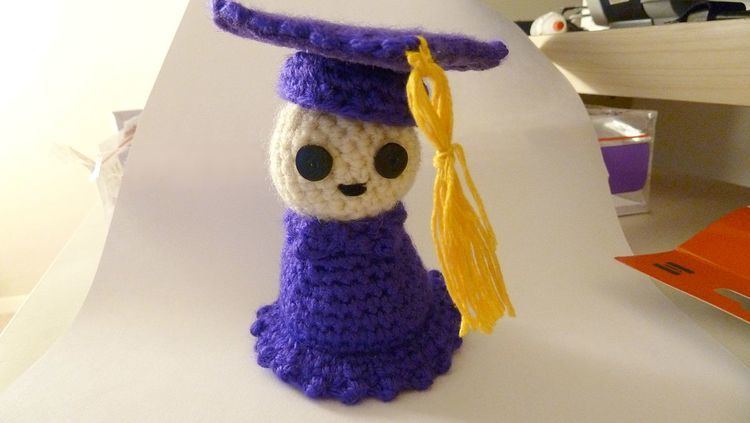 | ||
Amigurumi (編みぐるみ, lit. crocheted or knitted stuffed toy) Amigurumi is the Japanese art of knitting or crocheting small, stuffed yarn creatures. The word is a portmanteau of the Japanese words ami, meaning crocheted or knitted, and nuigurumi, meaning stuffed doll. In the west are called Amigurumi, which are the original phonetics of 編みぐるみ in Japanese language. Amigurumis vary in size and there are no restrictions about size or look. While Amigurumi has been known in Japan for several decades, Amigurumi first started appealing to the masses in other countries, especially in the West, in 2003. By 2006, amigurumi were reported to be some of the most popular items on Etsy, an online craft marketplace, where they typically sold for $10 to $100. Since then, popularity has continued to increase.
Contents
Even though Amigurumis seem popular online due to their presence in sites such as Etsy, Pinterest and Ravelry, Amigurumi is still a developing craft permeated and directly depending of emerging trends and popular culture.
Origins
According to the Crochet Guild of America there are earlier records of crocheted or knitted dolls made In China, early examples were known of three-dimensional dolls worked in crochet.
As background knowledge in the search of the origins of Amigurumi, Yoshihiro Matushita states that since the year 1185 there exists records of analogous techniques in Japan, such as Needle Binding. It is a fabric creation technique predating knitting and crocheting. During the ‘Edo’ period (1603-1867) Japan traded with the Dutch and as a result it is believed that knitting was introduced as a technique.
Furthermore the evolution of knitting were made by the Samurais, who were experts in creating garments and decorations for their katanas and winterwear. The author speculates that knitting might also have been learned by sex workers in the Japanese brothels. (Kihara, 2002).
During the Meji era (1868-1912) Japan transitioned from being a feudal society into a more modern model. It was also during that period that the Industrialization started in the country. The educational model was changed and a new Western-based education system for young people was inaugurated. Thousands of students were sent abroad to learn practices from the west. More than 3,000 westerners were hired to teach modern science, mathematics, technology, and foreign languages in Japan. (Meyers, 2013)
According to Dai Watanabe who made a quick survey in the origins of Amigurumi, “Women were invited to teach western needleworks during that time.” She also points out that the first stuffed crocheted motif as 西洋毛糸編物教授 (Seiyo-keito-amimono-kyouju, a Twigged loquat with a leaf and more fruit motifs starting appearing in 1920. (Watanabe, 2015).
Amigurumi as a term might have originated in Japan after WW II (1945) as an evolution of knitting and crocheting techniques. These techniques were brought by foreign visitors to Japan and might have been an alternative for families to create toys for their children during the huge economical crisis in the country.
Aesthetic
Cute Amigurumi are the most aesthetically popular; see Kawaii and Chibi for more relevant Japanese details. Amigurumi may be used as children's toys but are generally purchased or made solely for aesthetic purposes. Although Amigurumi originated in Japan, the craft has become popular around the world.
Technique
Amigurumi can be knitted, though are usually crocheted out of yarn using the basic techniques of crochet (single crochet stitch (Sc), double crochet (db), Invisible decrease (inv.Dec) etc. . Amigurumi are usually worked one section at a time and then sewed or crocheted together, except for some Amigurumi which are worked as one piece. In crochet, Amigurumi is typically worked in spiral rounds, in order to prevent "striping," a typical feature of joining crochet rounds in a project.
Typically, crochet hooks or knitting needles that are slightly smaller than one would use in a typical project are used, in order to achieve a tight gauge that retains stuffing and does not allow the stuffing to show through the fabric. Stuffing is usually standard polyester or cotton craft stuffing, but may be improvised from other materials. Plastic pellets, glass pebbles and even stones may be inserted beneath stuffing in order to distribute weight at the bottom of the figure.
